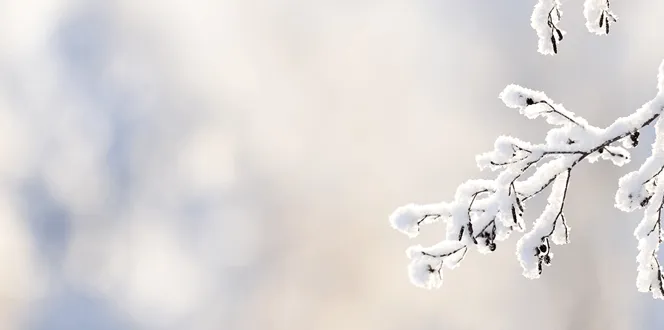How do trees survive winter? They have a few tried and true techniques.
Most trees drop their water-loving leaves in fall so they can conserve as much water as possible before winter starts. Also, trees undergo a few fascinating biological changes to stop their cells from freezing.
But despite these efforts, winter weather is relentless. There’s always a chance your tree will start spring with some sort of injury from the cold, a.k.a. winter dieback.
What is winter dieback?
Sometimes parts of a tree don’t make it through winter. That’s called winter die-off, or winter dieback. A limb here or a group of branches there might freeze to death, meaning they won’t put out new growth in spring. But don’t panic! Winter die-off does not mean your tree is a goner. Trees can absolutely bounce back from winter injury.
Common winter tree and shrub damage
Let’s walk through some common winter injuries and ways to support your plants in spring.
Sunscald on trees
- Problem: Warm and sunny days that turn to freezing nights can cause sunscald on tree bark. Here’s a detailed explanation of what sunscald is.
- Solution: In spring, you might see signs of sunscald like vertical cracks in the bark or discolored areas of bark. If the damage is minimal, trees can naturally heal themselves by gradually growing new bark. To prevent sunscald in the future, wrap tree trunks before winter.
Winter desiccation
- Problem: Cold wind, dry air, and a short supply of water in the soil? Man, talk about dehydration. These elements can turn thirsty evergreen needles brown in winter.
- Solution: Over time, your evergreen should naturally replace its dry, brown needles with fresh green ones. You can help out by hydrating the tree throughout the growing season. (FYI, here’s how much water your tree needs each week.) By late spring, it should be clear whether there are browned branches that won’t recover and need to be pruned.
Soil damage from salt
- Problem: Salt sprinkled on city roads has a way of sneaking into tree soil. And when road salt intermixes with healthy soil minerals, the soil structure, and the tree’s roots can be damaged. More on that here.
- Solution: Give the soil a hearty soak before spring bud break. According to Penn State University, it’ll take six inches of water to rinse out about half of the built-up salt. When the soil dries, add organic matter like compost or shredded leaves to improve soil quality.
Snow and ice damage
- Problem: Tree limbs that were weighed down by snow or coated in ice might be hanging or broken come spring.
- Solution: This is a time to call in the professionals. A certified arborist can prune branches that were damaged by snow or ice. Plus, they’ll be able to tell if your tree is dealing with any serious structural damage. If you need help with recovering your trees and shrubs from snow and ice, contact a local office for a consultation.





